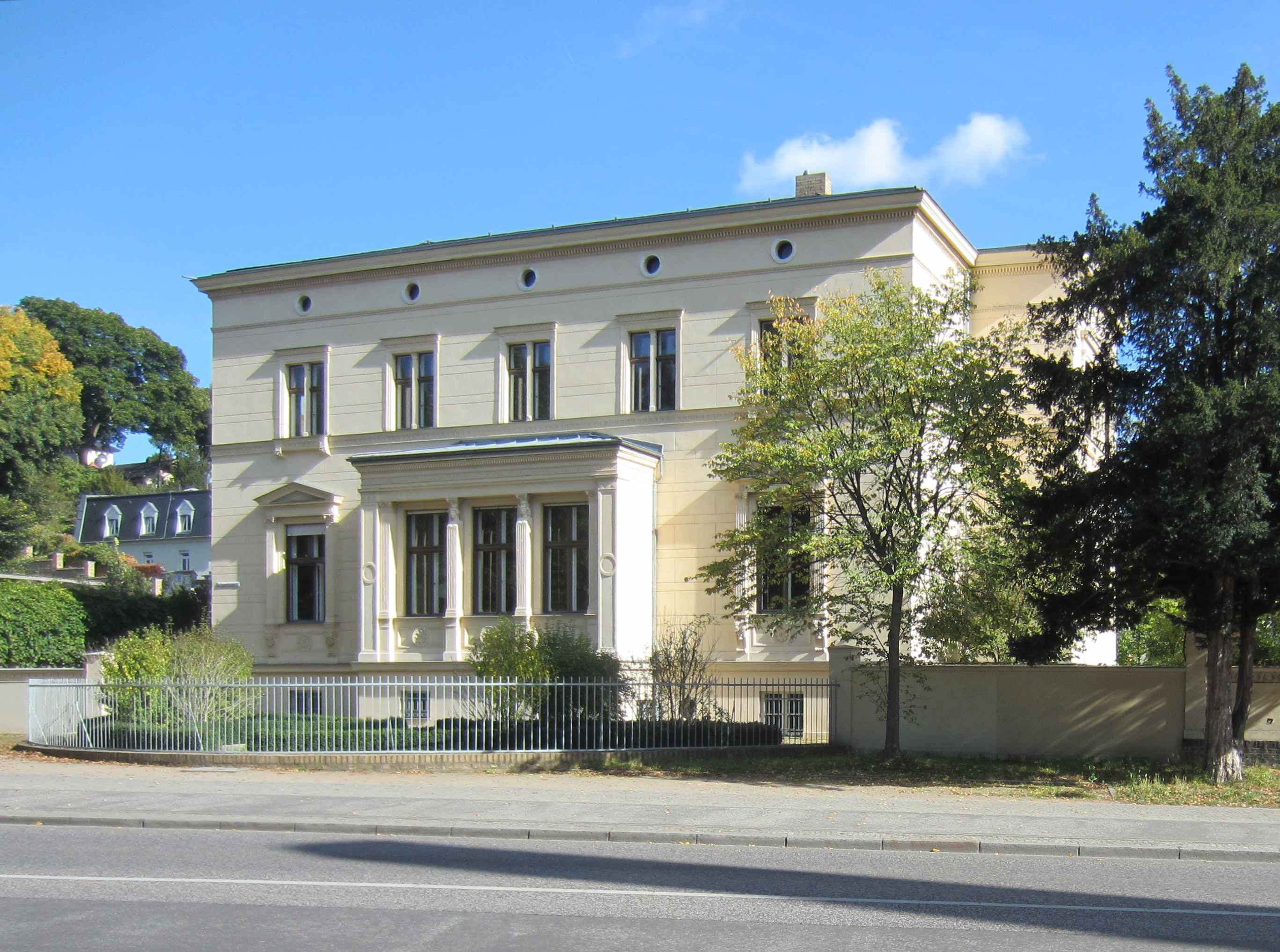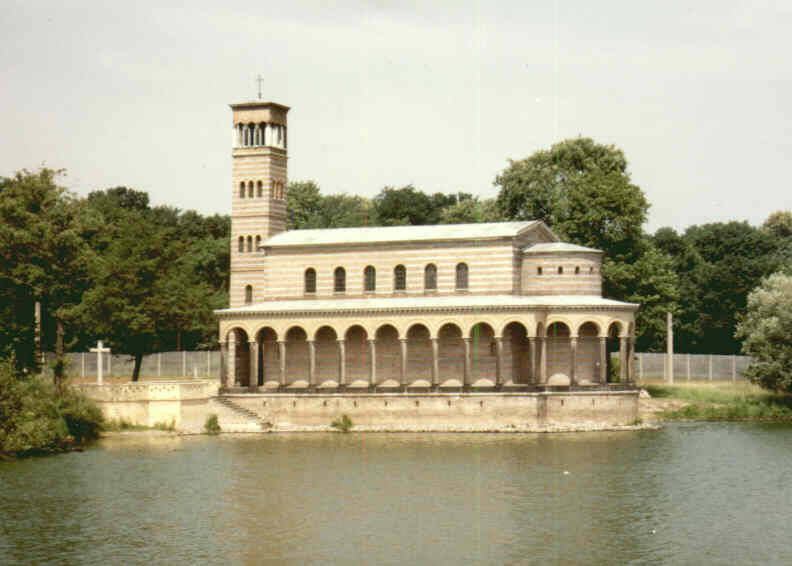|
Ferdinand Von Arnim
Heinrich Ludwig Ferdinand von Arnim (15 September 1814 – 23 March 1866) was a German architect and watercolour-painter. He was a student of Karl Friedrich Schinkel and mainly worked in Berlin and Potsdam. Life Arnim was born in Treptow an der Rega in Pomerania (present-day Trzebiatów, Poland), the son of Prussian Captain Friedrich Ludwig von Arnim and his wife Henriette, née Gadebusch. He trained as a land surveyor and studied architecture at the Royal Prussian Building School (''Bauakademie'') in Berlin between 1833 and 1838. Having completed his studies, he joined the Berlin Architects' Association in 1839, from 1840 he worked as site foreman under Friedrich Ludwig Persius and in 1844 was appointed building inspector official. Upon Persius' death in 1845, Arnim became a member of the Berlin City Palace building committee under Friedrich August Stüler and house architect of the Hohenzollern prince Charles of Prussia at his residence in Klein-Glienicke. He was ... [...More Info...] [...Related Items...] OR: [Wikipedia] [Google] [Baidu] |
Trzebiatów
Trzebiatów (pronounced ; ; formerly german: Treptow an der Rega) is a town in the West Pomeranian Voivodeship, Poland, with 10,119 inhabitants (2016). Trzebiatów is located on the Rega River in the north-western part of Poland, roughly 9 kilometers south of the Baltic coast. Trzebiatów obtained town rights in 1277 under Pomeranian rulers who had invited German settlers to populate the area. It was part of the Duchy of Pomerania within the Holy Roman Empire. In 1416, the town became part of the Hanseatic League, then served as an important trade post and developed architecturally, with a typical Brick Gothic-style influence. It had trading connections with larger Hanseatic cities such as Danzig (Gdańsk), Lübeck and Hamburg. From 1648 the town was part of Brandenburg-Prussia, the later Kingdom of Prussia. After World War II the town became part of Poland. The German population was expelled and the town was resettled with Poles. It escaped destruction during the war and its ... [...More Info...] [...Related Items...] OR: [Wikipedia] [Google] [Baidu] |
Hermann, Fürst Von Pückler-Muskau
Prince Hermann Ludwig Heinrich von Pückler-Muskau (; born as Count Pückler, from 1822 Prince; 30 October 1785 – 4 February 1871) was a German nobleman, renowned as an accomplished artist in landscape gardening, as well as the author of a number of books mainly centering around his travels in Europe and Northern Africa, published under the pen name of "Semilasso". Life Pückler-Muskau was the first of five children of Count Carl Ludwig Hans Erdmann Pückler, and the Countess Clementine of Callenberg, who gave birth to him at age 15. He was born at Muskau Castle (now Bad Muskau) in Upper Lusatia, then ruled by the Electorate of Saxony. He served for some time in the Saxon "Garde du Corps" cavalry regiment at Dresden, and afterwards traveled through France and Italy, often by foot. In 1811, after the death of his father, he inherited the ''Standesherrschaft'' (barony) of Muskau. Joining the war of liberation against Napoleon I of France, he left Muskau under the Gene ... [...More Info...] [...Related Items...] OR: [Wikipedia] [Google] [Baidu] |
Caroline De La Motte Fouqué
Caroline Philippine von Briest (better known as Caroline de la Motte Fouqué; 7 October 1773 – 20 July 1831) was one of the most prolific women writers of the Romantic period. She wrote novels, short stories, fairy tales, as well as essays, on Greek mythology, on the history of fashion, and travelogues. Her numerous works gained her a high degree of celebrity. Early years Caroline Philippine von Briest was born in Nennhausen in 1773 (1775 is also mentioned). She grew up at the Nennhausen estate, which belonged to her father, Philipp Friedrich August Wilhelm von Briest (1749–1822), who had served in the Prussian Army. Her mother was Caroline Wilhelmine Zinkow (or Zinnow), and she had a younger brother, August Jakob Friedrich von Briest (1789–1790). After her mother's death, her father married Marie Friederike Helene von Luck, and they had two children, Caroline Friederike Auguste von Briest and Clara Friederike Charlotte von Briest. The home was frequently visited by litera ... [...More Info...] [...Related Items...] OR: [Wikipedia] [Google] [Baidu] |
Nennhausen
Nennhausen is a municipality in the Havelland district, in Brandenburg, Germany Germany, officially the Federal Republic of Germany (FRG),, is a country in Central Europe. It is the most populous member state of the European Union. Germany lies between the Baltic and North Sea to the north and the Alps to the sou .... It consists of the ''Ortsteile'' (villages) Bamme, Buckow, Damme, Gräningen, Liepe and Mützlitz. service.brandenburg.de Demography References Localities in Havelland {{Brande ...[...More Info...] [...Related Items...] OR: [Wikipedia] [Google] [Baidu] |
Gothic Revival Architecture
Gothic Revival (also referred to as Victorian Gothic, neo-Gothic, or Gothick) is an architectural movement that began in the late 1740s in England. The movement gained momentum and expanded in the first half of the 19th century, as increasingly serious and learned admirers of the neo-Gothic styles sought to revive medieval Gothic architecture, intending to complement or even supersede the neoclassical styles prevalent at the time. Gothic Revival draws upon features of medieval examples, including decorative patterns, finials, lancet windows, and hood moulds. By the middle of the 19th century, Gothic had become the preeminent architectural style in the Western world, only to fall out of fashion in the 1880s and early 1890s. The Gothic Revival movement's roots are intertwined with philosophical movements associated with Catholicism and a re-awakening of high church or Anglo-Catholic belief concerned by the growth of religious nonconformism. Ultimately, the " Anglo-Catholicis ... [...More Info...] [...Related Items...] OR: [Wikipedia] [Google] [Baidu] |
La Certosa
La Certosa (Italian: ''Isola della Certosa'') is an island in the Venetian Lagoon, northern Italy. It is located north-east of Venice, fewer than from San Pietro di Castello and little more than from the Venice Lido. A channel separates it from the Vignole island. La Certosa has a surface of some . History The island housed a community of Augustinian friars starting from 1199. After two centuries, the abandoned island was ceded to the Carthusians, the previous religious edifice being restored from 1490 to 1505. After the Napoleonic conquest of Venice, it became a military installation. The 17th century ''Castello delle Polveri'' ("Powder Castle"), the only historical edifice remained today, has been restored from the late 1990s. Redevelopment In 2010, plans were revealed for a project called "Parco della Certosa", which would redevelop the abandoned island to include a public green park, a nautical center and training school, as well as restaurants, bars, nature trails and ... [...More Info...] [...Related Items...] OR: [Wikipedia] [Google] [Baidu] |
Neoclassicism
Neoclassicism (also spelled Neo-classicism) was a Western cultural movement in the decorative and visual arts, literature, theatre, music, and architecture that drew inspiration from the art and culture of classical antiquity. Neoclassicism was born in Rome largely thanks to the writings of Johann Joachim Winckelmann, at the time of the rediscovery of Pompeii and Herculaneum, but its popularity spread all over Europe as a generation of European art students finished their Grand Tour and returned from Italy to their home countries with newly rediscovered Greco-Roman ideals. The main Neoclassical movement coincided with the 18th-century Age of Enlightenment, and continued into the early 19th century, laterally competing with Romanticism. In architecture, the style continued throughout the 19th, 20th and up to the 21st century. European Neoclassicism in the visual arts began c. 1760 in opposition to the then-dominant Rococo style. Rococo architecture emphasizes grace, ornamen ... [...More Info...] [...Related Items...] OR: [Wikipedia] [Google] [Baidu] |
Ruinenberg
The Ruinenberg is a hill in the Bornstedt borough of Potsdam, located north of Sanssouci Park. In 1748, the Prussian king Frederick the Great had a water tank with a capacity of around built on top to supply the Sanssouci water features, and had it decorated with artificial ruins. From 1841 a surrounding landscape garden was laid out at the behest of King Frederick William IV of Prussia, according to plans designed by Peter Joseph Lenné. History The lands around the former ''Hünenberg'' hill had been part of the partridge and pheasant hunting grounds of Frederick's father King Frederick William I of Prussia. His son Frederick the Great began the erection of Sanssouci Palace in 1745. Frederick wanted a lot of water for his then planned projects: a fountain complex, the Neptune Grotto, and a marble colonnade in Sanssouci Park, which is no longer standing. The plans intended to draw water from the Havel with windmills into the high basin on the mountain. It then flowed under t ... [...More Info...] [...Related Items...] OR: [Wikipedia] [Google] [Baidu] |
Church Of Peace (Sanssouci)
The Protestant Church of Peace (german: Friedenskirche) is situated in the Marly Gardens on the Green Fence (''Am Grünen Gitter'') in the palace grounds of Sanssouci Park in Potsdam, Germany. The church was built according to the wishes and with the close involvement of the artistically gifted King Frederick William IV and designed by the court architect, Ludwig Persius. After Persius' death in 1845, the architect Friedrich August Stüler was charged with continuing his work. Building included work by Ferdinand von Arnim and also. The church is located in the area covered by the UNESCO World Heritage Site Palaces and Parks of Potsdam and Berlin. The cornerstone of the churchhouse was laid on 14 April 1845. The building was dedicated on 24 September 1848, though construction continued until 1854. The structure resembles a High Medieval Italian monastery. The Church of Peace Frederick William himself made the original sketches on which the design was to be based. He gave his ... [...More Info...] [...Related Items...] OR: [Wikipedia] [Google] [Baidu] |
Church Of The Redeemer, Sacrow
The Protestant Church of the Redeemer (german: Heilandskirche, la, S. Ecclesiae sanctissimi Salvatoris in portu sacro) is located to the south of the village of ''Sacrow'', which since 1939 has been incorporated to Potsdam, the capital of the German Bundesland of Brandenburg. It is famous for its Italian Romanesque Revival architecture with a separate campanile (bell tower) and for its scenic location. It was built in 1844. The design was based on drawings by King Frederick William IV of Prussia, called the ''Romantic on the Throne''. The building was realized by Ludwig Persius, the king's favorite architect. In 1992, the church along with the park and Sacrow Manor was added by UNESCO to the World Heritage Site "Palaces and Parks of Potsdam and Berlin" for its architecture and cohesion with the surrounding park. Location The church is situated on the bank of lake Jungfernsee, a part of the river Havel, 300 metres south of ''Sacrow Manor'' at the edge of its park, designed a ... [...More Info...] [...Related Items...] OR: [Wikipedia] [Google] [Baidu] |




